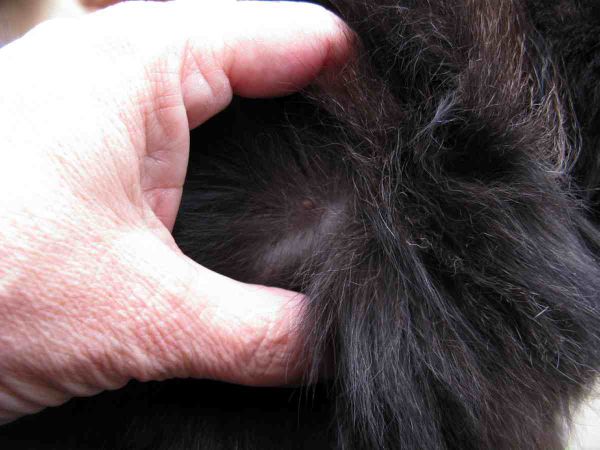Ticks are usually found in high grasses, forests and woods between the months of March to October. They are small parasitical arachnids that have scuttled the earth for at least 90 million years, living off the blood of mammals (including people), birds , reptiles, even some amphibians. They are transmitters of diseases such as Lyme Disease and Rocky Mountain Spotted Fever, diseases which often go un-diagnosed for months, sometimes years in both humans and animals.
[related_content slugs=”pet-patter-identifying-body-language-in-dogs,pet-patter-maintenance-exam-for-your-dog” description=”More Pet Patter” position=”right”]
Preventive measures in dogs and cats include a variety of topical creams and tick collars, but be careful as these are often toxic, despite being approved for animals. Don’t use more than one sort at once and definitely do not over-apply. Follow attached instructions closely.
Alas, the bites themselves are usually painless, and only sometimes develop symptoms of redness or itching. In most cases, the target is completely unaware of being bitten. The symptoms of various tick diseases can take weeks or even months to manifest in your pet. They are varied and include from excessive drinking, panting, weakness, constipation, lethargy, excessive salivation and vomiting. More serious symptoms such as blue, white or very pale gums, dizziness or circling, and extremely bloated abdomen mean you are to get your animal to an emergency vet clinic pronto. Don’t put it off. It could mean the difference of life or death.
To check your animal for these little horrors run your hands all over the body, paying special attention to all crevices and skin folds, as well as ears and neck. When you feel any area that is raised, part the hair and investigate. Do this in a well-lit area, or use a flashlight. Ticks vary in size from a flake of black pepper to a pencil eraser, depending on whether or not they are engorged with blood
There are a lot of silly rumours such as putting a hot match head to the tick, or painting it with nail polish or gasoline. Don’t do this. It can harm your pet, and often causes the tick to release further pathogens into the bite.
Careful removal of a tick is absolutely critical. If it is done quickly or sloppily the head breaks off and remains under the skin to burrow deeper and thus diseases are born. Use tweezers to gently but firmly grip the body protruding from the skin. Wear gloves so potential pathogens are not transmitted from tick to hand. Do not squeeze or twist the tick! Move slowly and steadily, working the little bugger out of the skin so that it remains intact.
Do not squash the tick as this may also release pathogens. Don’t crush. Flush.
Thoroughly clean affected area with soap and water and then apply anti-bacterial ointment to the wound. Keep an eye on the area for several days to make sure there is no further redness or irritation, and if there is contact your vet.
Following these simple steps can make the difference between a healthy life for you and/or your pet and years of chronic ailments. T’is an easy choice!
—
Samantha Bennett has been a professional animal care giver for over three years, taking many critters under her wing from dogs and cats to hedgehogs, ferrets, birds and reptiles. She has cared for them in her own home and in the homes of others, and learned much through hands on experience. She understands the love pet parents feel for their animals, and their need to understand and help their furry charges. With this in mind, she has begun this column, a weekly space where she will give simple, useful directions, tips and information designed to keep animals safe and happy.
Samantha can be reached at samstress3@gmail.com
